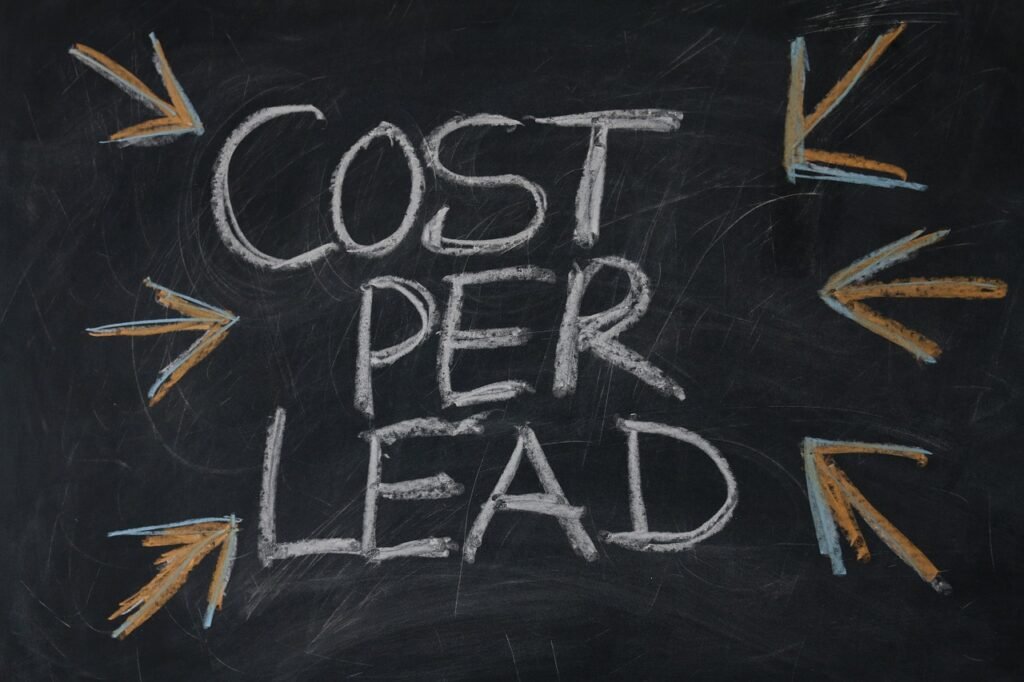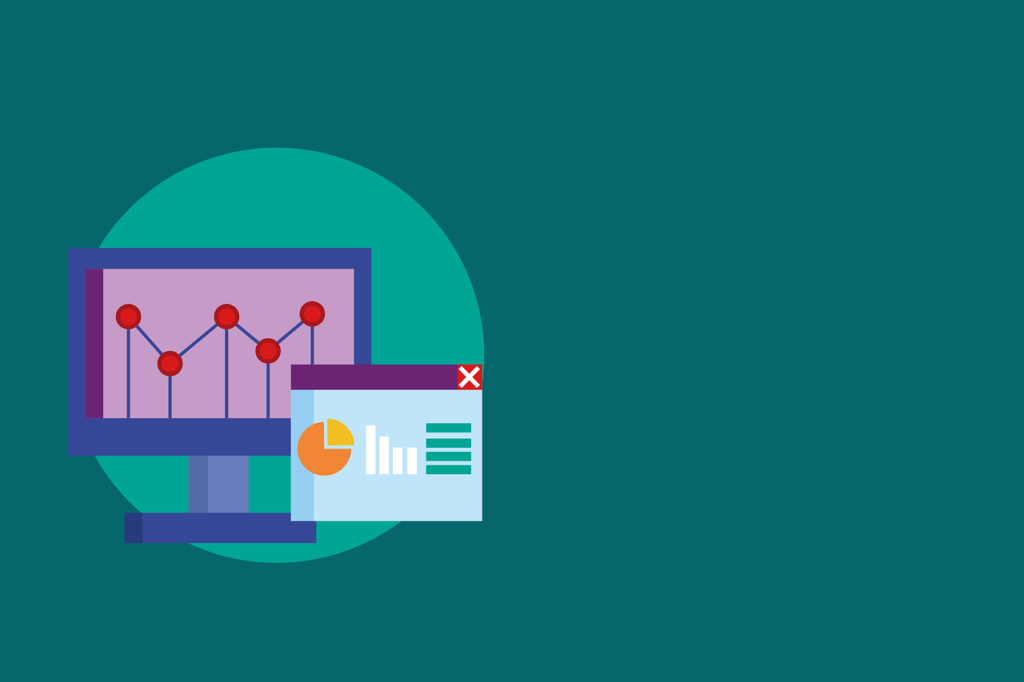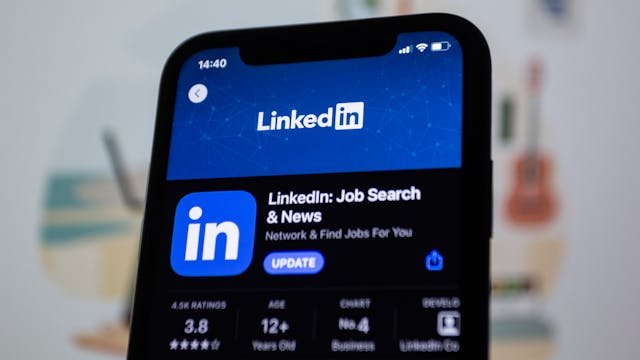- 1. How Large is the Global Print Advertising Market?
- 2. Why Do Consumers Prefer Print Advertisements?
- 3. How Trustworthy is Print Marketing Compared to Digital?
- 4. What is the Impact of Print Advertising on Website Traffic?
- 5. How Effective is Direct Mail in Engaging Consumers?
- 6. What Role Does Print Play in Nonprofit Fundraising?
- 7. How Does Print Advertising Influence Purchase Intent?
- 8. How Do Print Advertisements Compare in Mental Processing Effort?
- 9. What is the Return on Investment for Print Advertising?
- 10. How Does Print Advertising Perform in High-Income Households?
- 11. What Are the Popularity Rates of Newspapers and Magazines?
- 12. How Do Print Ads Influence Consumer Actions?
- 13. How Does Print Advertising Compare to Digital in Terms of Mental Effort?
- 14. What is the Consumer Engagement Rate with Print Ads?
- 15. How Does Print Advertising Influence Online Behavior?
- 16. How Do Consumers Perceive Print vs. Digital Ads?
- 17. How Effective is Print Advertising in the Luxury Market?
- 18. What Are the Benefits of Combining Print with Digital Marketing?
- 19. How Do Consumers Engage with Coupons in Print Ads?
- 20. What is the Lifespan of Print Advertisements?
- 21. How Does Print Advertising Perform in Different Age Groups?
- 22. What Are the Costs and Benefits of Print Advertising?
- 23. How Do Consumers Retain Information from Print Ads?
- 24. How Do Print Ads Influence Consumer Purchasing Behavior?
- 25. What Are the Trends in Combining Print and Digital Marketing?
- 26. How Does Print Advertising Enhance Brand Loyalty?
- 27. How Does Print Advertising Influence Consumer Perceptions of Brand Quality?
- 28. What Are the Environmental Impacts of Print Advertising?
- 29. How Does Print Advertising Compare with Digital in Terms of Ad Blocking?
- 30. What Are the Psychological Effects of Print vs. Digital Ads?
- Conclusion
- We got all the latest Marketing Stats here:
In a world increasingly dominated by digital marketing, print media retains a powerful influence. This might seem surprising, but the tangible and trustworthy nature of print offers unique advantages that digital can’t fully replicate. Understanding the role and impact of print marketing today is crucial for businesses looking to optimize their strategies and reach a diverse audience effectively. In this article, we delve into essential statistics that showcase the ongoing relevance of print marketing in the digital era.
Print marketing has been a staple of advertising for decades, and despite the rise of digital media, it remains a vital tool in the marketer’s arsenal. While digital ads can be blocked, ignored, or perceived as intrusive, print marketing offers a tangible, credible, and often more engaging alternative. This article explores key statistics that highlight the effectiveness of print marketing and provides insights into why it continues to thrive alongside digital strategies.
1. How Large is the Global Print Advertising Market?

Global Market Size
The global print advertising market is expected to reach .23 billion in 2024. Despite the digital revolution, this substantial market size underscores the enduring value of print media in advertising.
Businesses across various sectors continue to invest in print advertising, leveraging its ability to reach specific audiences and create lasting impressions.
Why It Matters
Print advertising remains relevant because it offers a level of engagement that digital ads often can’t match. The physical nature of print makes it more memorable, and the ability to target specific demographics ensures that businesses can reach their desired audience effectively.
For industries like luxury goods and local businesses, print advertising provides a prestige and credibility that is hard to achieve through digital means alone.
2. Why Do Consumers Prefer Print Advertisements?
Consumer Preferences
A significant 73% of consumers prefer receiving print advertisements over digital ads. Moreover, 75% of consumers feel special when they receive print advertisements. These statistics highlight the emotional connection and sense of value that print media can create.
The Tangibility Factor
Print ads are tangible and can be held, making them more impactful than fleeting digital ads. This tangibility creates a physical connection between the consumer and the brand, which can lead to higher engagement and recall.
Additionally, the aesthetic and tactile qualities of print can enhance the perceived value of the advertisement and the brand it represents.
3. How Trustworthy is Print Marketing Compared to Digital?
Trust in Print
Print marketing is seen as the most trustworthy form of advertising, with 56% of consumers considering it the most reliable. This trust extends to making purchase decisions, with 82% of consumers trusting print advertisements when choosing products.
Building Credibility
In a digital age rife with misinformation and scams, the credibility of print marketing stands out. The permanence and regulatory scrutiny of print publications contribute to this trustworthiness.
For businesses, leveraging print media can enhance brand credibility and foster deeper trust with consumers, leading to increased customer loyalty and higher conversion rates.
4. What is the Impact of Print Advertising on Website Traffic?
Driving Online Traffic
Print advertisements have been shown to drive a 27% increase in website visits. This is a significant jump from 12% in 2009, demonstrating the evolving synergy between print and digital marketing.
Cross-Media Benefits
Using print to direct consumers online can amplify the reach and effectiveness of marketing campaigns. QR codes, personalized URLs, and call-to-action prompts in print ads can guide consumers to digital platforms, enhancing engagement and providing measurable data on campaign success.
This integration helps bridge the gap between offline and online marketing efforts.
5. How Effective is Direct Mail in Engaging Consumers?
Direct Mail Engagement
Direct mail remains highly effective, with 80% of consumers acting on direct mail advertisements, compared to 45% for digital ads. Furthermore, 88% of people take the time to look through the print advertisements they receive.
Personalized Marketing
Direct mail can be highly personalized, making it more engaging for recipients. By using customer data to tailor messages and offers, businesses can increase response rates and build stronger connections with their audience. The physical act of handling mail also creates a tactile experience that digital ads cannot replicate, making it more likely for the message to be retained.
6. What Role Does Print Play in Nonprofit Fundraising?
Impact on Donations
For nonprofits, print ads generate about 78% of donations. This statistic underscores the significant role that print marketing plays in the fundraising efforts of charitable organizations.
Emotional Appeal
Print media’s ability to convey stories and evoke emotions can be particularly powerful in the nonprofit sector. Brochures, newsletters, and direct mail can effectively communicate the impact of donations and the ongoing needs of the organization, encouraging continued support from donors.
7. How Does Print Advertising Influence Purchase Intent?
Increasing Purchase Intent
Print advertisements not only drive traffic but also increase purchase intent. The purchase intent of consumers who notice print ads increased to 22% in 2020 from 7% in 2009. This highlights the persuasive power of print media.
Building Brand Loyalty
Print ads often provide more detailed and informative content than digital ads, allowing consumers to make well-informed decisions. This thorough approach can build brand loyalty, as consumers feel more confident and connected with brands that provide comprehensive information through trusted channels.
8. How Do Print Advertisements Compare in Mental Processing Effort?
Cognitive Processing
Print advertisements require 21% less cognitive effort to process than digital advertisements. This means that consumers can understand and retain the information in print ads more easily, enhancing their overall effectiveness.
Simplicity and Clarity
The simplicity and clarity of print ads contribute to their lower cognitive load. Without the distractions of pop-ups, animations, and other digital interruptions, print ads allow consumers to focus on the core message, leading to better comprehension and recall.
9. What is the Return on Investment for Print Advertising?
High ROI
Print advertising offers a 112% return on investment in terms of response rates from consumers. This high ROI demonstrates the value of investing in print marketing strategies.
Cost-Effectiveness
While print advertising may have higher upfront costs compared to digital options, its ability to generate strong engagement and high response rates can make it a cost-effective choice in the long run. By targeting specific audiences and using high-quality materials, businesses can maximize the impact and return of their print campaigns.
10. How Does Print Advertising Perform in High-Income Households?

Engagement in High-Income Households
Print advertising is particularly effective among high-income households, with 70% of households earning more than $100,000 reading newspapers. This demographic tends to have more disposable income and values the credibility and depth of information that print media provides.
Strategic Targeting
Businesses targeting high-income consumers can benefit significantly from print advertising. These consumers are likely to appreciate the detailed and high-quality content often found in print, making it an ideal medium for luxury goods, financial services, and high-end lifestyle products. Ensuring that print advertisements are placed in premium publications that cater to this demographic can further enhance their impact.
11. What Are the Popularity Rates of Newspapers and Magazines?
Consumer Preferences
Newspapers and magazines remain highly popular among consumers, with a 63% preference rate, compared to only 25% for the internet. This significant difference highlights the enduring appeal of print media in providing trusted and engaging content.
Trust and Reliability
The high trust in newspapers and magazines is due to their long-standing reputation for credible reporting and editorial standards. Consumers often turn to print media for in-depth analysis and news, which they may find lacking in the faster-paced digital news environment. For marketers, this means that placing ads in respected print publications can enhance brand credibility and trustworthiness.
12. How Do Print Ads Influence Consumer Actions?
Immediate Consumer Action
Almost 80% of consumers act on print advertisements immediately, compared to 45% for digital ads. This high rate of immediate action underscores the effectiveness of print ads in prompting quick responses from consumers.
Leveraging Print for Conversions
To capitalize on this high action rate, businesses should include clear and compelling calls-to-action in their print ads. Whether it’s visiting a website, using a discount code, or attending an event, making the next steps easy and attractive can drive significant consumer engagement and conversions. Additionally, integrating print ads with digital tracking methods, such as unique URLs or QR codes, can help measure the direct impact of print on consumer actions.
13. How Does Print Advertising Compare to Digital in Terms of Mental Effort?
Cognitive Ease
Print advertisements require 21% less cognitive effort to process compared to digital advertisements. This lower cognitive load means that consumers can understand and retain information from print ads more easily and quickly.
Designing for Impact
To maximize the cognitive ease of print ads, businesses should focus on clear, concise messaging and high-quality visuals. Avoiding clutter and using a clean design can help ensure that the core message is communicated effectively. Additionally, leveraging storytelling techniques in print ads can engage readers emotionally, making the content more memorable.
14. What is the Consumer Engagement Rate with Print Ads?
High Engagement Rates
An impressive 88% of people take the time to look through the print advertisements they receive. This high engagement rate demonstrates the unique ability of print media to capture and hold consumer attention.
Enhancing Engagement
To further enhance engagement, businesses should create visually appealing and relevant print ads that resonate with their target audience. Using high-quality images, compelling headlines, and clear benefits can attract and retain reader interest. Additionally, including interactive elements such as perforated coupons, fold-out sections, or augmented reality components can make print ads more engaging and memorable.
15. How Does Print Advertising Influence Online Behavior?
Driving Online Engagement
Print advertisements are effective in driving online behavior, with a 27% increase in website visits attributed to print ads. This highlights the powerful synergy between print and digital marketing strategies.
Integrating Print and Digital
Businesses can optimize this synergy by incorporating elements in print ads that encourage online interaction. This can include QR codes, personalized URLs, or social media prompts. By creating a seamless transition from print to digital, businesses can enhance the overall customer experience and track the effectiveness of their print campaigns through online metrics.

Related: Check out our free tools:

16. How Do Consumers Perceive Print vs. Digital Ads?
Consumer Perception
Consumers generally perceive print ads as more trustworthy and credible compared to digital ads. This perception is reflected in the fact that 82% of consumers trust print advertisements when making purchase decisions.
Building Trust Through Print
For businesses, this trust can be leveraged to build stronger relationships with consumers. Ensuring that print ads are well-designed, informative, and aligned with the brand’s values can reinforce this credibility. Additionally, using print media for important announcements, product launches, or brand storytelling can enhance trust and consumer loyalty.
17. How Effective is Print Advertising in the Luxury Market?
Prestige and Credibility
High-end brands often leverage print’s prestige and credibility to showcase their products and build brand image. Print media’s association with quality and exclusivity makes it an ideal platform for luxury advertising.
Targeted Luxury Advertising
To effectively reach affluent consumers, luxury brands should focus on premium print publications that cater to high-income readers. Using high-quality materials, sophisticated design, and detailed product information can enhance the perceived value of the advertisements. Additionally, featuring exclusive offers or invitations can create a sense of exclusivity and drive engagement.
18. What Are the Benefits of Combining Print with Digital Marketing?
Synergistic Benefits
Combining print and digital marketing can yield impressive results, including increased sales and inquiries. For instance, businesses that integrate print ads with email marketing see a 49% increase in sales and a 125% increase in inquiries.
Strategic Integration
To leverage these benefits, businesses should create integrated campaigns that use print to drive digital engagement and vice versa.
This can involve using print ads to direct consumers to online content, promoting digital campaigns through print media, and tracking cross-channel interactions to measure effectiveness. Ensuring consistency in messaging and branding across both channels can also enhance the overall impact of the campaigns.
19. How Do Consumers Engage with Coupons in Print Ads?
Popularity of Print Coupons
A significant 69% of people like receiving print advertisements that include coupons, particularly for restaurants and retail businesses. This preference underscores the effectiveness of print coupons in driving consumer action and engagement.
Maximizing Coupon Impact
Businesses can maximize the impact of print coupons by ensuring they are attractive, easy to use, and offer genuine value. Including clear expiration dates, terms of use, and redemption instructions can enhance usability.
Additionally, tracking coupon redemption through unique codes can provide insights into the effectiveness of the print campaign and consumer preferences.
20. What is the Lifespan of Print Advertisements?

Longevity of Print Ads
Consumers who receive print advertisements tend to keep them for an average of 17 days. This extended lifespan allows for repeated exposure and increased recall of the advertised message.
Designing for Longevity
To take advantage of this extended lifespan, businesses should design print ads that are not only visually appealing but also provide useful information that consumers are likely to refer back to.
This can include detailed product descriptions, helpful tips, or valuable offers. Ensuring that the print material is durable and aesthetically pleasing can also encourage consumers to keep it longer.
21. How Does Print Advertising Perform in Different Age Groups?
Age Group Engagement
Print media appeals to a wide range of age groups, but its effectiveness can vary. For instance, 95% of people under age 25 read magazines, highlighting the medium’s appeal among younger audiences. Additionally, 62% of adults aged 35 or older read a newspaper, demonstrating print’s continued relevance across different age demographics.
Targeted Print Strategies
Businesses can optimize print advertising by tailoring content to the interests and preferences of specific age groups. For younger audiences, incorporating vibrant designs, engaging stories, and interactive elements can enhance appeal.
For older demographics, providing in-depth information, practical content, and high-quality visuals can increase engagement. Understanding the media consumption habits of each age group can help in designing effective print campaigns.
22. What Are the Costs and Benefits of Print Advertising?
Cost Considerations
Print advertising generally has higher upfront costs compared to digital options, including production, printing, and distribution expenses. However, these costs can be justified by the high engagement rates and ROI that print ads often deliver.
Balancing Costs and Benefits
To balance costs and benefits, businesses should focus on high-impact print placements that reach their target audience effectively. Investing in high-quality materials and design can enhance the perceived value of print ads.
Additionally, using data to target print ads to specific demographics can improve efficiency and reduce wasted spend. Tracking the performance of print campaigns through metrics like response rates and ROI can help in optimizing future investments.
23. How Do Consumers Retain Information from Print Ads?
Retention Rates
Consumers tend to retain information from print ads more effectively than from digital ads. This can be attributed to the lower cognitive effort required to process print media, which enhances understanding and memory retention.
Enhancing Retention
Businesses can enhance retention by ensuring print ads are clear, concise, and visually appealing. Using memorable visuals, catchy headlines, and a clear call-to-action can help in making the advertisement more impactful.
Additionally, providing useful information that consumers can refer back to, such as product details or promotional offers, can increase the likelihood of the ad being kept and remembered.
24. How Do Print Ads Influence Consumer Purchasing Behavior?
Impact on Purchases
Print advertisements have a strong influence on purchasing behavior. Consumers who notice print ads are more likely to have an increased purchase intent, which rose to 22% in 2020 from 7% in 2009. This significant increase highlights the persuasive power of print media.
Driving Purchases
To drive purchases, businesses should create compelling print ads that highlight the benefits and features of their products. Including testimonials, product reviews, and exclusive offers can enhance credibility and entice consumers to make a purchase.
Ensuring that the purchasing process is straightforward and accessible, such as providing clear instructions on how to redeem offers, can further boost conversion rates.
25. What Are the Trends in Combining Print and Digital Marketing?
Multi-Channel Integration
Combining print and digital marketing is becoming increasingly popular, as it offers synergistic benefits. For example, integrating print ads with email marketing can result in a 49% increase in sales and a 125% increase in inquiries. This integrated approach leverages the strengths of both mediums to create a more comprehensive and effective marketing strategy.
Implementing Integrated Campaigns
To implement successful integrated campaigns, businesses should ensure consistent messaging and branding across both print and digital channels. Using print ads to drive traffic to digital platforms, such as websites or social media, can enhance engagement and provide measurable data on campaign effectiveness.
Incorporating interactive elements like QR codes or personalized URLs in print ads can facilitate this integration and provide a seamless user experience.
26. How Does Print Advertising Enhance Brand Loyalty?

Building Loyalty
Print advertising plays a crucial role in building brand loyalty. The tangible and credible nature of print media fosters a deeper connection with consumers, enhancing trust and loyalty. Consumers are more likely to remain loyal to brands that they perceive as trustworthy and reliable.
Strategies for Loyalty
Businesses can enhance brand loyalty through print advertising by focusing on high-quality content that reflects their brand values. Regularly updating consumers with print newsletters, magazines, or direct mail can keep them engaged and informed.
Offering exclusive deals or loyalty rewards through print media can also strengthen the bond between the brand and its customers. Consistently delivering valuable and reliable content can reinforce positive perceptions and encourage repeat business.
27. How Does Print Advertising Influence Consumer Perceptions of Brand Quality?
Perception of Quality
Print advertising is often associated with high-quality and premium brands. The aesthetic and tactile qualities of print media, combined with the careful design and presentation, can enhance the perceived quality of the brand.
Enhancing Brand Perception
To enhance brand perception through print advertising, businesses should invest in high-quality materials and design. Using premium paper, sophisticated layouts, and professional photography can elevate the overall look and feel of the advertisement.
Highlighting the brand’s unique selling points and demonstrating quality through detailed product information can further reinforce positive perceptions. Aligning print ads with the brand’s image and values can help in creating a cohesive and compelling brand narrative.
28. What Are the Environmental Impacts of Print Advertising?
Sustainability Concerns
While print advertising has environmental impacts due to paper production and printing processes, the industry is increasingly adopting sustainable practices. Using recycled paper, eco-friendly inks, and sustainable printing processes can reduce the ecological footprint of print marketing.
Promoting Sustainability
Businesses can promote sustainability in their print advertising by choosing environmentally friendly materials and working with printers that follow sustainable practices.
Communicating these efforts to consumers can enhance the brand’s reputation and appeal to eco-conscious customers. Additionally, using print ads to promote sustainable products or initiatives can align the brand with positive environmental values and attract like-minded consumers.
29. How Does Print Advertising Compare with Digital in Terms of Ad Blocking?
Ad Blocking Challenges
One of the significant challenges of digital advertising is the prevalence of ad blockers. More than three-quarters of people aged 25–40 use ad blockers to avoid being bombarded with online ads. In contrast, print ads are immune to ad blocking, ensuring that the message reaches the intended audience.
Overcoming Digital Challenges
To overcome the challenges posed by ad blockers, businesses should consider incorporating print advertising into their marketing mix. Print ads offer a guaranteed way to reach consumers without the risk of being blocked.
Additionally, integrating print with digital campaigns can help in capturing consumer attention and driving engagement across multiple channels.
30. What Are the Psychological Effects of Print vs. Digital Ads?
Psychological Engagement
Print advertisements have unique psychological effects compared to digital ads. They require 21% less cognitive effort to process and are often perceived as more credible and trustworthy. This ease of processing and higher credibility can lead to better engagement and recall.
Leveraging Psychological Benefits
Businesses can leverage the psychological benefits of print advertising by creating ads that are clear, concise, and visually appealing. Using high-quality images and compelling copy can enhance the emotional impact of the ad.
Ensuring that the message is straightforward and easy to understand can reduce cognitive load and improve retention. Additionally, reinforcing the credibility of the ad through trusted publications or endorsements can further enhance its effectiveness.
Conclusion
Print marketing continues to play a crucial role in the digital era, offering unique advantages that digital advertising alone cannot provide. The tangible, trustworthy, and engaging nature of print media makes it a powerful tool for reaching and influencing consumers. By understanding and leveraging the essential statistics and insights presented in this article, businesses can optimize their print marketing strategies to achieve better engagement, higher conversion rates, and stronger brand loyalty. Integrating print with digital marketing can further enhance the effectiveness of campaigns, creating a comprehensive approach that leverages the strengths of both mediums.
We got all the latest Marketing Stats here:
Read Next
- Psychology of Travel Booking and Its SEO Implications
- CTA Strategies for Travel Websites
- Understanding Micro-Moments in Travel SEO
- How to Handle Negative Reviews and Their SEO Impacts
- The Role of Expertise and Authority in Travel SEO






















Comments are closed.